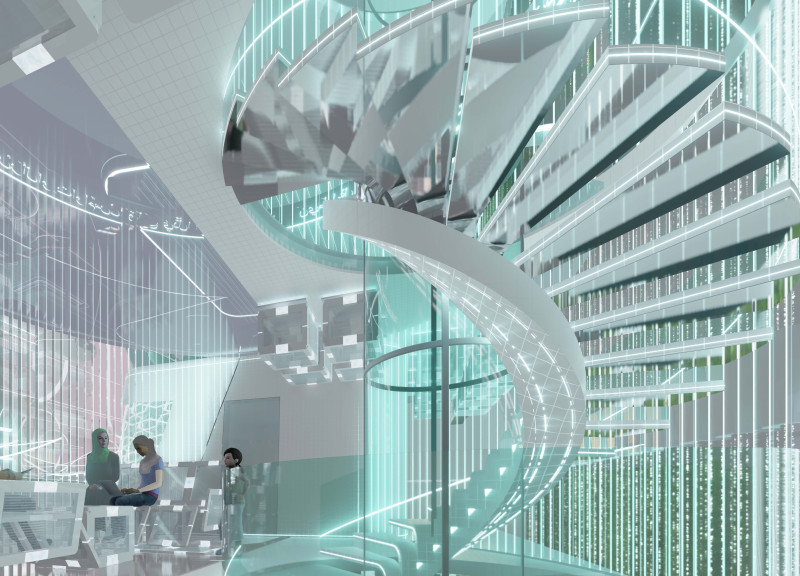5 key facts about this project
## Overview
Located in a context that prioritizes sustainable urban living, the design seeks to integrate advanced technologies and eco-conscious practices within residential environments. The project emphasizes a balanced coexistence of living spaces that cater to diverse activities, fostering both community interactions and individual privacy. This approach is rooted in addressing contemporary challenges related to urbanization and environmental sustainability.
## Spatial Strategy
The layout is organized into distinct yet interconnected zones, promoting a harmonious flow between public and private areas. The upper levels are characterized by a rhythmic arrangement that incorporates both communal spaces for gatherings and private areas for personal use. Vertical extensions allow future growth without compromising ground space usage, enhancing microclimatic conditions through integrated vertical gardens and optimized air circulation.
The design includes large communal areas to facilitate social interactions, while more intimate spaces—such as family rooms and study areas—provide refuge within the broader ecosystem. Specially designated areas, like the “Eternity Space” and “The Space of Family Culture,” highlight cultural expressions essential to community bonding.
## Materiality and Technological Integration
Material selection prioritizes sustainability and functionality, combining aesthetic durability with operational efficiency. Extensive use of glass in facades and interiors maximizes natural light, while a robust metal framework reinforces structural integrity. Composite materials are employed in vertical farming systems, enhancing ecological performance.
The project incorporates smart technology, exemplified by Multi-Use Vertical Shields (MUVS), which serve as intelligent barriers regulating privacy and energy efficiency. Additionally, Multi-Use Robotic Parametric Furniture Systems (MSRPS) allow for customizable and adaptable furniture solutions, enhancing space utility. These features illustrate a commitment to innovative design that seeks to minimize environmental impact while addressing the needs of residents.





















































